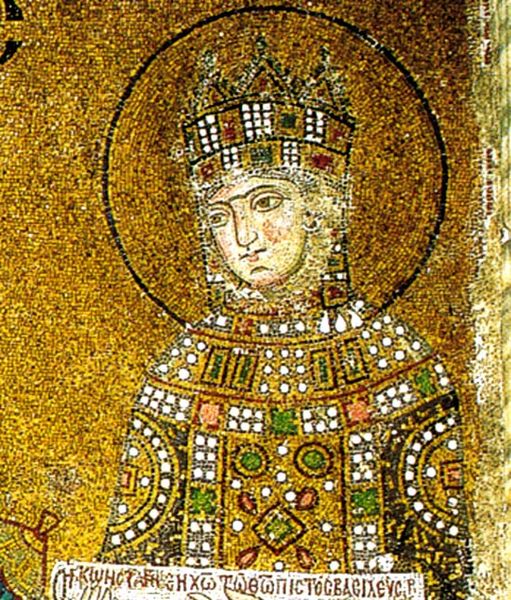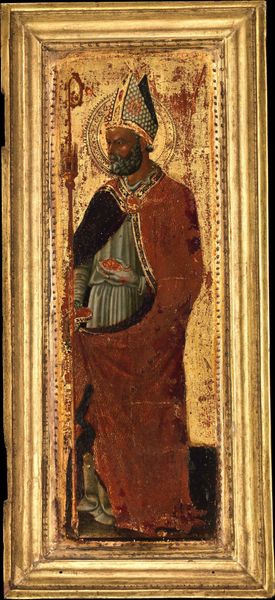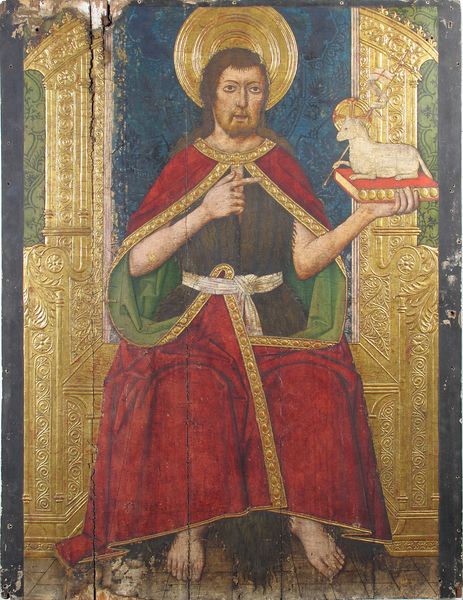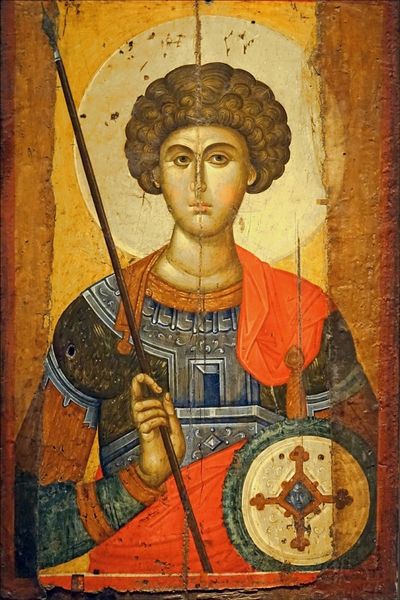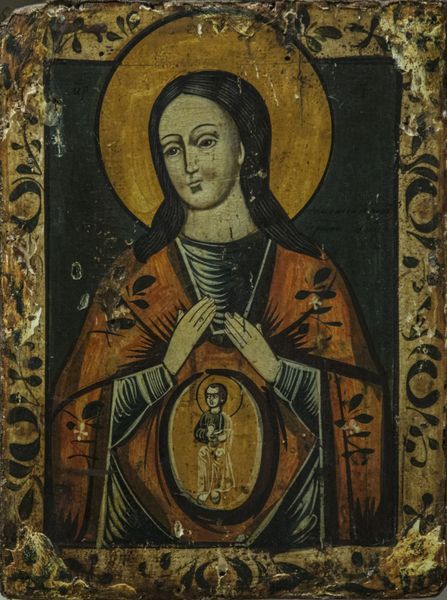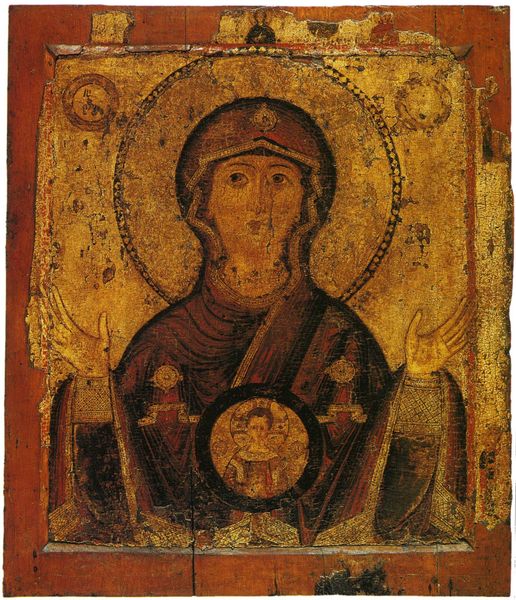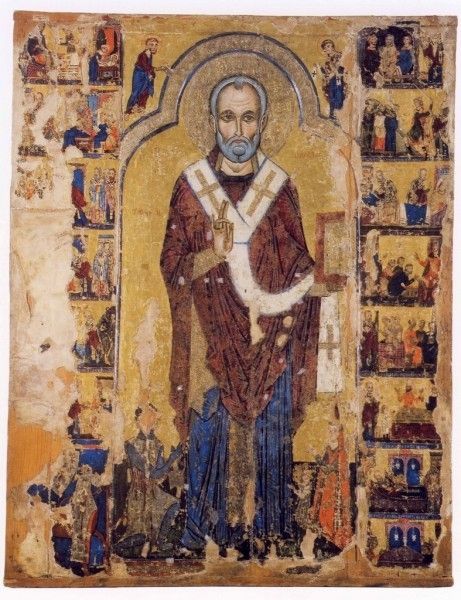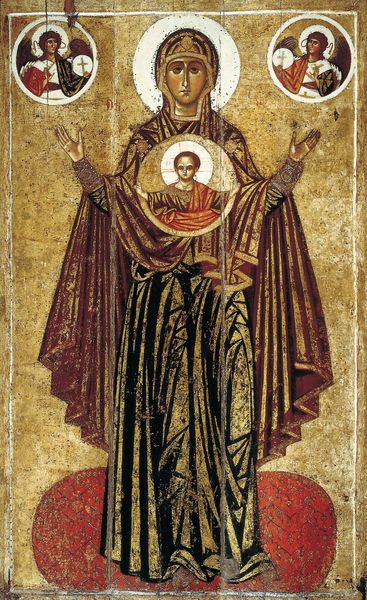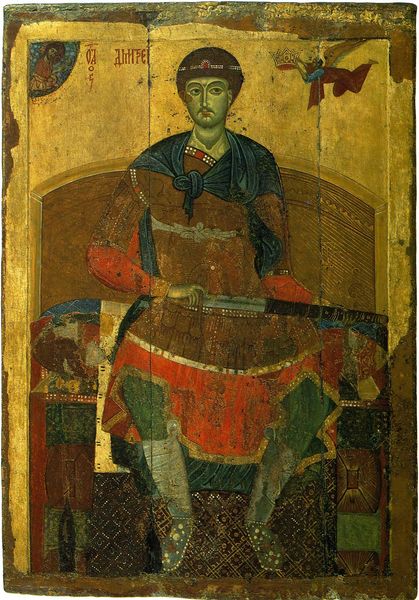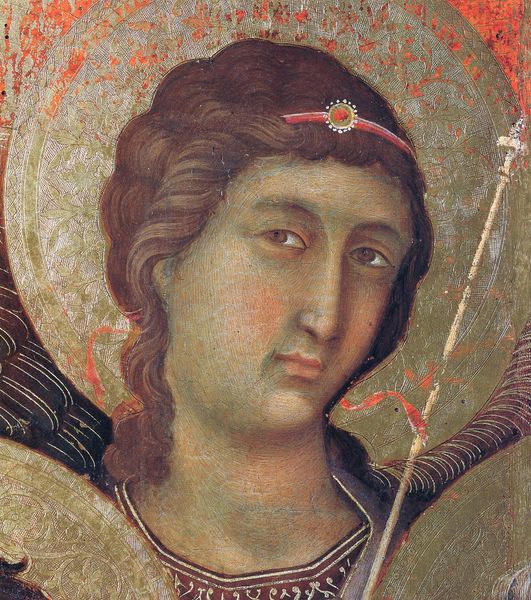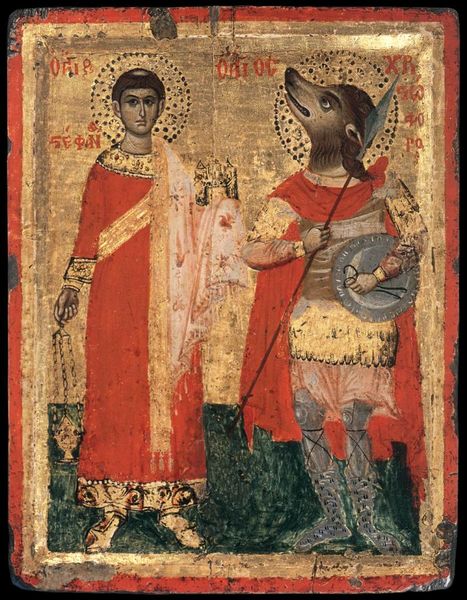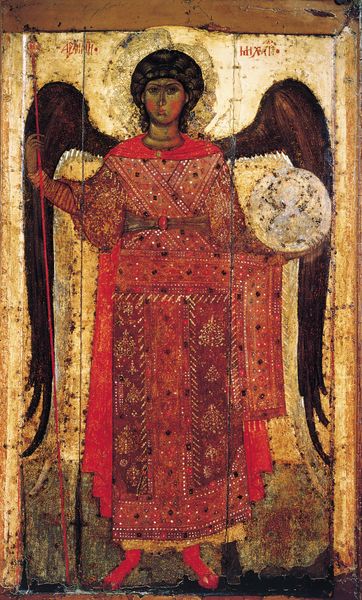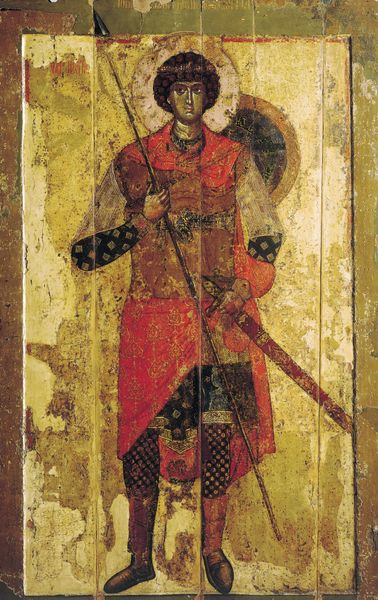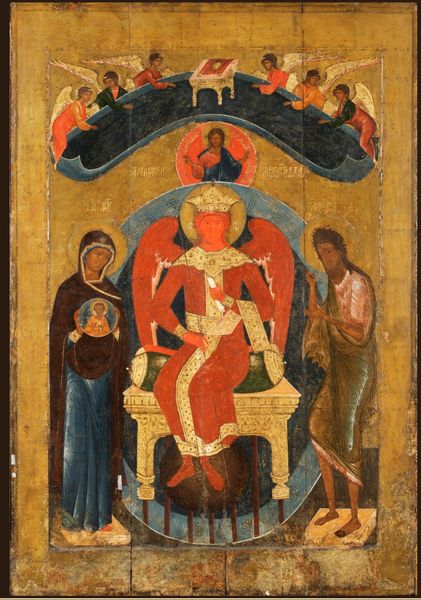
tempera, painting, oil-paint
#
portrait
#
tempera
#
painting
#
oil-paint
#
oil painting
#
men
#
italian-renaissance
#
early-renaissance
#
portrait art
Dimensions: Overall: 23 7/8 × 14 1/2 in. (60.6 × 36.8 cm)
Copyright: Public Domain
Curator: This is Saint Ambrose, an early Renaissance portrait executed between 1465 and 1470 by Giovanni di Paolo. Editor: The overwhelming use of gold is the first thing I see. It evokes such a sense of power and divine authority, but also suggests the earthly riches connected to religious figures during that time. Curator: The luminosity you note stems from the tempera medium di Paolo chose, with perhaps some oil paint employed in specific areas. Consider, too, the geometric patterns and their impact on our reading of spatial depth. Notice how the composition flattens the figure against that radiant gold background. Editor: Exactly. That gold background radiates. But beyond aesthetics, think about what gold signifies! It's truth, illumination, royalty – all these ideas amplifying Saint Ambrose’s importance as a scholar and leader. Curator: Indeed. Let’s not overlook how di Paolo’s employment of line—crisp, defined—separates form. This acute separation creates a clear visual hierarchy, leading our eyes directly to Saint Ambrose’s thoughtful, downward-cast gaze, doesn’t it? Editor: That gaze is so poignant. He holds a book, suggesting knowledge, wisdom, and his legacy as one of the Church Fathers. And his mitre, encrusted with jewels, would signify worldly authority sanctioned by a higher power. It’s quite a package of symbolism! Curator: It truly is a considered work of both artistic structure and symbolic import. Editor: Looking closely allows us to really unpack not only Giovanni di Paolo's creative skill but a visual language steeped in meaning.
Comments
No comments
Be the first to comment and join the conversation on the ultimate creative platform.
